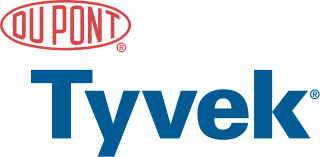 W
WStructural dampness is the presence of unwanted moisture in the structure of a building, either the result of intrusion from outside or condensation from within the structure. A high proportion of damp problems in buildings are caused by ambient climate dependent factors of condensation and rain penetration. Capillary penetration of fluid from the ground up through concrete or masonry is known as "rising damp" and is governed by the shape and porosity of the construction materials through which this evaporation limited capillary penetration takes place. Structural damp, regardless of the mechanisms through which it takes place, is exacerbated by higher levels of humidity.
 W
WDamp proofing or a Damp-Proof in construction is a type of moisture control applied to building walls and floors to prevent moisture from passing into the interior spaces. Dampness problems are among the most frequent problems encountered in residences.
 W
WFlashing refers to thin pieces of impervious material installed to prevent the passage of water into a structure from a joint or as part of a weather resistant barrier system. In modern buildings, flashing is intended to decrease water penetration at objects such as chimneys, vent pipes, walls, windows and door openings to make buildings more durable and to reduce indoor mold problems. Metal flashing materials include lead, aluminium, copper, stainless steel, zinc alloy, and other materials.
 W
WHousewrap, also known by the genericized trademark homewrap, generally denotes a synthetic material used to protect buildings. Housewrap functions as a weather-resistant barrier, preventing rain from getting into the wall assembly while allowing water vapor to pass to the exterior. If moisture from either direction is allowed to build up within stud or cavity walls, mold and rot can set in and fiberglass or cellulose insulation will lose its R-value due to heat-conducting moisture. House wrap may also serve as an air barrier if it is sealed carefully at seams.
 W
WQadad or qudad is a waterproof plaster surface, made of a lime plaster treated with slaked lime and oils and fats. The technique is over a thousand years old, with the remains of this early plaster still seen on the standing sluices of the ancient Marib Dam.
 W
WA reglet is found on the exterior of a building along a masonry wall, chimney or parapet that meets the roof. It is a groove cut within a mortar joint that receives counter-flashing meant to cover surface flashing used to deflect water infiltration. Reglet can also refer to the counter-flashing itself when it is applied on the surface, known as "face reglet" or "reglet-flashing".
 W
WTadelakt is a waterproof plaster surface used in Moroccan architecture to make baths, sinks, water vessels, interior and exterior walls, ceilings, roofs, and floors. It is made from lime plaster, which is rammed, polished, and treated with soap to make it waterproof and water-repellant. Tadelakt is labour-intensive to install, but durable. Since it is applied as a paste, tadelakt has a soft, undulating character, it can form curves, and it is seamless. Pigment can be added to give it any colour, but deep red is traditional. It may have a shiny or matte finish.
 W
WTar paper is a heavy-duty paper used in construction. Tar paper is made by impregnating paper or fiberglass mat with tar, producing a waterproof material useful for roof construction. Tar paper is distinguished from roofing felt, which is impregnated with asphalt instead of tar, but these two products are used the same way, and their names are sometimes used informally as synonyms.
 W
WTyvek is a brand of flashspun high-density polyethylene fibers, a synthetic material; the name is a registered trademark of the DuPont company, known for their production of chemicals and textiles. Tyvek is often used as housewrap, a synthetic material used to protect buildings during construction, or as personal protective equipment The material is difficult to tear, but can easily be cut with scissors or a knife. Water vapor can pass through Tyvek, but liquid water cannot. All of these properties have led to Tyvek being used in a variety of applications.
 W
WA vapor barrier is any material used for damp proofing, typically a plastic or foil sheet, that resists diffusion of moisture through the wall, floor, ceiling, or roof assemblies of buildings to prevent interstitial condensation and of packaging. Technically, many of these materials are only vapor retarders as they have varying degrees of permeability.
 W
WWater damage describes various possible losses caused by water intruding where it will enable attack of a material or system by destructive processes such as rotting of wood, mold growth, bacteria growth, rusting of steel, swelling of composite woods, de-laminating of materials such as plywood, etc.
 W
WWaterproofing is the process of making an object or structure waterproof or water-resistant so that it remains relatively unaffected by water or resisting the ingress of water under specified conditions. Such items may be used in wet environments or underwater to specified depths.